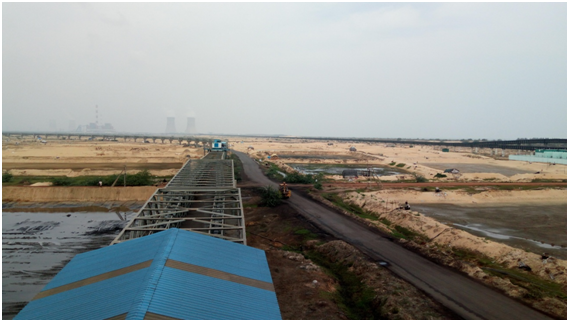Start
End
On 23rd Jan 2017. We got a permission to visit the APGENCO which is near by Nelatur in Nellore district. It is one of the largest powers generating plant in Nellore dist. It is the integration of three units. But currently 2 are in running condition with a capacity of 800mw each. While the another unit is under construction.
We started from college at 9:30 am by our college bus and we reached the plant by 10:15 am. The plant management provided us engineers to guide us through the plant and to explain various sections. They demonstrated each and every component of unit 1. First we entered into turbine and generator section. Our guide explained clearly about the working of turbine and generator. There are three turbines coupled to the alternator. They are HP, IP, LP turbines. Based on the requirement of pressure of steam, any one of the turbine runs where the other turbines are closed with the help of valves. Later, he explains how the alternator converts mechanical into electrical energy and also how the electrical energy is transferred through R,Y,B phases. In this power station the generator electrical energy in 24kv. It is step up to 440kv by using 3 step up transformer and supplied to transmission lines.
After that we reached boiler section where the steam is generated. In this section our engineer explains about how the water is taken from krishnapatnam port and storage of water and demineralisation of water. This DM water is send to the boiler and coal is also transferred from coal plant to boiler after pulverisation. With the help of coal, air from atmosphere, water is boiled in boiler and converted into high pressure steam. The ash which is released from the boiler is send to ash storage drum and harmful flue gases are filtered by the electrostatic precipitator and diluted flue gases are released into the atmosphere through chimney.
Then, we went to coal handling plant by bus. There we absorbed how the pulverised coal is transferred into boiler by means of conveyor belts. They are 2 types of conveyor belts. (i) pipe type conveyor (ii) flat type conveyor. There is a device called stacker which is used to transfer the stored pulverised coal to conveyor belts which is worth nearly 12 crores. After visiting the coal handling plant, we went to coal storage plant and learn about the equipment. With this we had completed our visit. We had our lunch by 2 pm in the APGENCO canteen itself and we returned to the college by about 4:00 pm. The engineers explained with clarity about each and every equipment and also cleared all our doubts.
Really we should thank our college management and plant management for giving us permission to visit such a large capacity steam power plant. By this visit, we gained a lot of practical knowledge like functioning of plant which is very useful to us. Through this practical view we can remember the subject for long time.
We further request you sir to provide more number of industrial tours.




